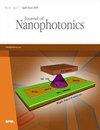Recent progress on inverse design for integrated photonic devices: methodology and applications
IF 1.1
4区 物理与天体物理
Q4 NANOSCIENCE & NANOTECHNOLOGY
引用次数: 0
Abstract
Photonic integrated circuits (PICs) have attracted great attention as promising platforms for high-data-rate communications and high-performance computing. For the PICs, photonic devices with compatible materials, compact footprint, high-performance, and sophisticated functionalities are necessary building blocks. Design optimization to implement such devices for target applications and requirements are of critical importance. In this respect, inverse design methods, including iterative optimizations and deep neural networks, have demonstrated significant advantages over the traditional simulation-based trial-and-error optimization approach. We provide an overview of the recent progress on the inverse designs for the integrated photonic devices. The principles and procedure of the inverse design methods are presented and discussed, followed by a summary of the methods employed for specific integrated photonic devices in different integrated photonics material platforms. Finally, topics of future applications and fabrication constraints for the inverse design methods are discussed.集成光子设备逆向设计的最新进展:方法与应用
光子集成电路(PIC)作为高数据速率通信和高性能计算的理想平台,已经引起了人们的极大关注。对于光子集成电路而言,具有兼容材料、紧凑尺寸、高性能和复杂功能的光子器件是必要的构件。针对目标应用和要求实现此类器件的设计优化至关重要。在这方面,反向设计方法(包括迭代优化和深度神经网络)与传统的基于模拟的试错优化方法相比具有显著优势。我们将概述集成光子器件逆向设计的最新进展。我们介绍并讨论了反向设计方法的原理和程序,随后总结了在不同集成光子材料平台中针对特定集成光子器件所采用的方法。最后,讨论了反向设计方法的未来应用和制造限制。
本文章由计算机程序翻译,如有差异,请以英文原文为准。
求助全文
约1分钟内获得全文
求助全文
来源期刊

Journal of Nanophotonics
工程技术-光学
CiteScore
2.60
自引率
6.70%
发文量
42
审稿时长
3 months
期刊介绍:
The Journal of Nanophotonics publishes peer-reviewed papers focusing on the fabrication and application of nanostructures that facilitate the generation, propagation, manipulation, and detection of light from the infrared to the ultraviolet regimes.
 求助内容:
求助内容: 应助结果提醒方式:
应助结果提醒方式:


